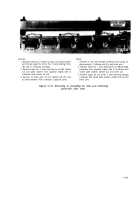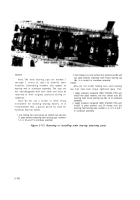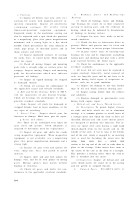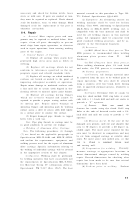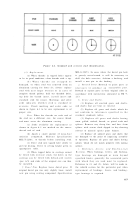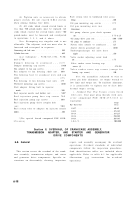TM-9-2815-200-35
ENGINE, WITH CONTAINER:TURBOSUPERCHARGED, DIESEL ,FUEL INJECTION ,90-DEGREE “V” TYPE, AIR - COOLED ,12 - CYLINDER , ASSEMBLY ;MODELS AVDS-1790-2M (2815-856-4996), AVDS-1790-2A AND AVDS-1790-2AM (2815-856-9005)
TECHNICAL MANUAL; DIRECT SUPPORT, GENERAL SUPPORT AND DEPOT MAINTENANCE MANUAL INCLUDING REPAIR PARTS AND SPECIAL TOOLS LISTS
TM-9-2815-200-35 - Page 295 of 779
CHAPTER 6
OVERHAUL OF ENGINE COMPONENT S
Section
l.
GENERAL
CLEANING,
INSPECTION,
REPAIR,
AND
ASSEMBLY PROCEDURES
6-1. General
a. Procedures.
The procedures for cleaning ,
inspection, repair and assembly of the variou s
parts and components which make up the engin e
subassemblies will be the same for a grea t
percentage of parts and components. To avoi d
repetition, the general procedures are detailed in
paragraphs 6-2 through 6-6 and will b e
referenced throughout this chapter. An y
cleaning ,
inspection ,
repair ,
and assembl y
procedures which are peculiar to a specific par t
or component will be covered in the section o r
paragraph relating to that item. Aluminu m
castings must be realodized or coated in ac -
cordance with MIL-C-5541A whenever coatin g
is marred .
b.
Tables will be used to list the variou s
operations and components involved in th e
overhaul of engine sub-assemblies. Paragrap h
and / or figur e
references for disassembly ,
cleaning ,
inspection ,
repair ,
and assembl y
procedures will be listed in these tables unde r
their appropriate heading .
c.
The Repair Parts section of the manual .
Appendix B, will be used to identify parts and to
locate points of measurement for overhaul limits.
6-2. Cleaning Instruction s
a. General.
The importance of cleaning mus t
be thoroughly understood by maintenanc e
personnel. Great care and conscientious effor t
are required in all cleaning operations. Th e
presence of dirt or foreign material is a constant
threat to satisfactory engine operation an d
maintenance. A dirty operation can result i n
cylinder scuffing or scratching, high oil con -
sumption, bearing destruction, and a variety o f
component failures directly attributed to th e
entranc e
of dirt. Maintai n
rigi d
cleanin g
standards during all phases of the cleanin g
operation .
The following general instruction s
apply to all cleaning operations .
(1) Clean all parts before inspection, afte r
repair, and before assembly .
(2) Hands should be kept free of any ac -
cumulation of grease, which can collect dust and
grit .
(3) After cleaning, all parts should be cov -
ered or wrapped to protect them from dirt and
dust accumulation .
b. Castings .
(1) Remove sludge and gum deposits using
a stiff brush .
(2) Clean all surfaces with dry-cleanin g
solvent or mineral spirits paint thinner. Repea t
operation if surface is not free of scale o r
adhering material which might be dislodge d
later .
(3) Blow out all tapped holes with com -
pressed air .
(4) After cleaning, dry casting with com -
pressed air .
Warning:
Particles blown by compressed ai r
are hazardous. Make certain air stream i s
directed away from user and that other person s
are not exposed. Protect eyes and face wit h
appropriate shields .
c.
Oil
Passages.
Particular
attention
must
be
given to all oil passages in machined parts. All oil
passages must be free of obstructions .
(1) Clean passages with wire or probes to
break up all sludge or gum deposits .
(2) Wash passages by flushing with dry -
cleaning solvent or mineral spirits paint thinner .
Be sure passages are free from obstructions and
clear any particles which might later becom e
dislodged and contaminate the oil system .
(3) After cleaning, dry passages wit h
compressed air .
d. Electrical Cables and Flexible Hoses .
Clean cables and flexible hoses with soap an d
water .
Note.
Do not allow dry-cleaning solvent o r
mineral spirits pain thinner to be in prolonged
contact with the rubber components and flexible
hoses. These cleaners cause leather, rubber, and
synthetic materials to dry, rot, and lose pliability,
making them unserviceable .
6-1
Back to Top

